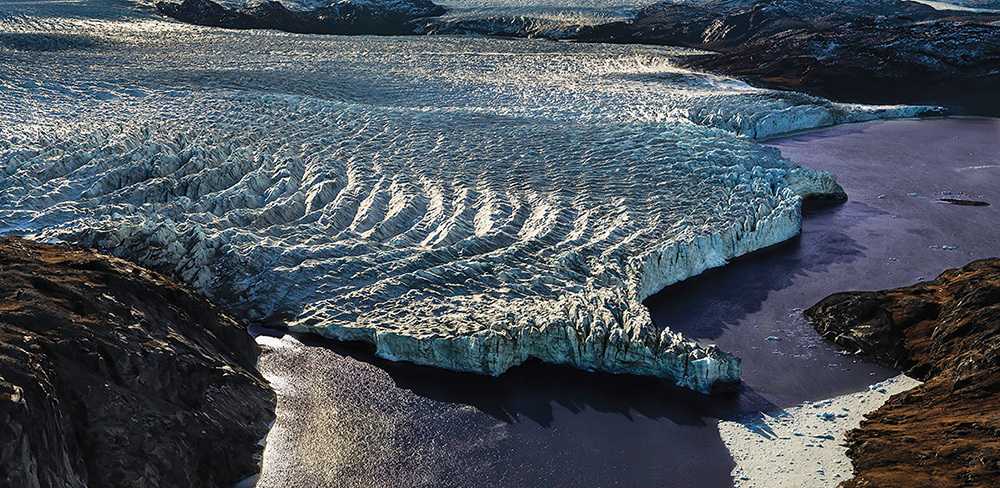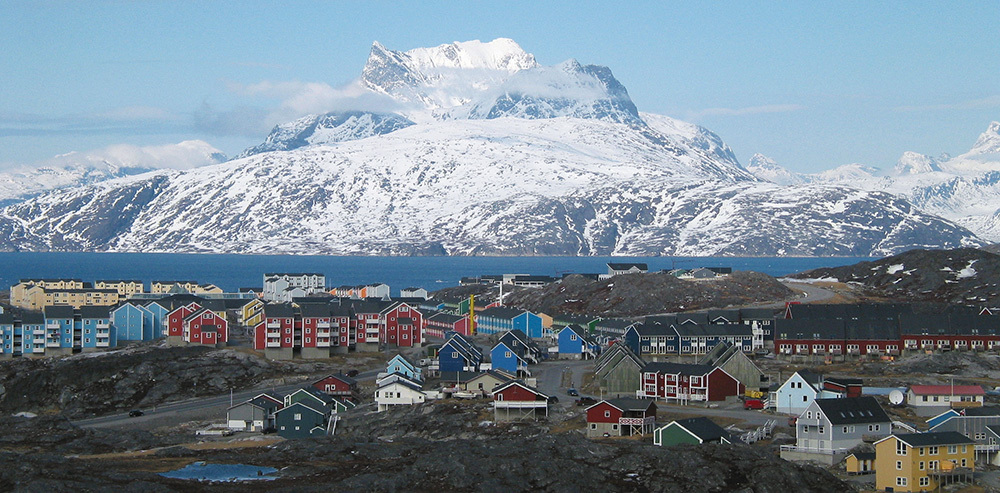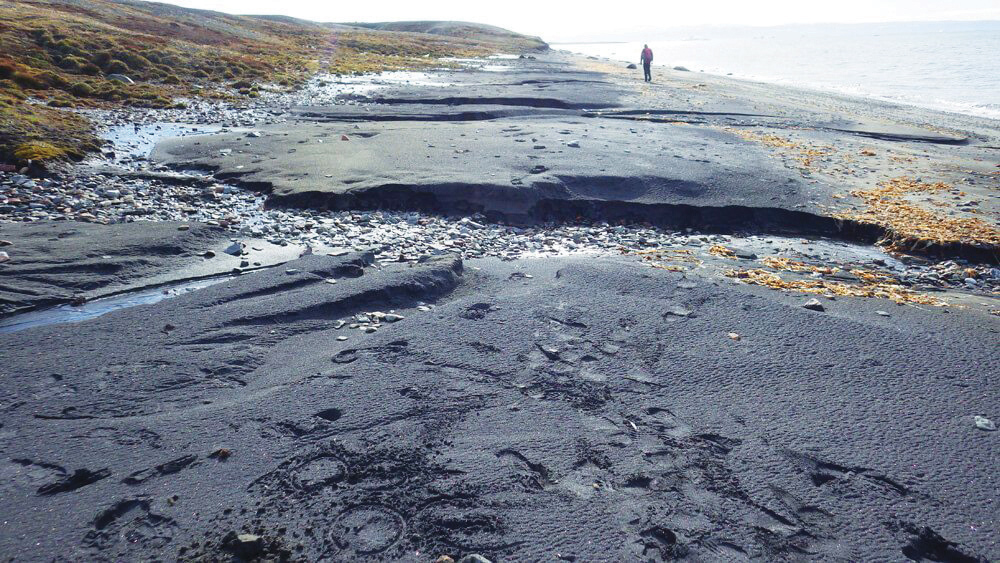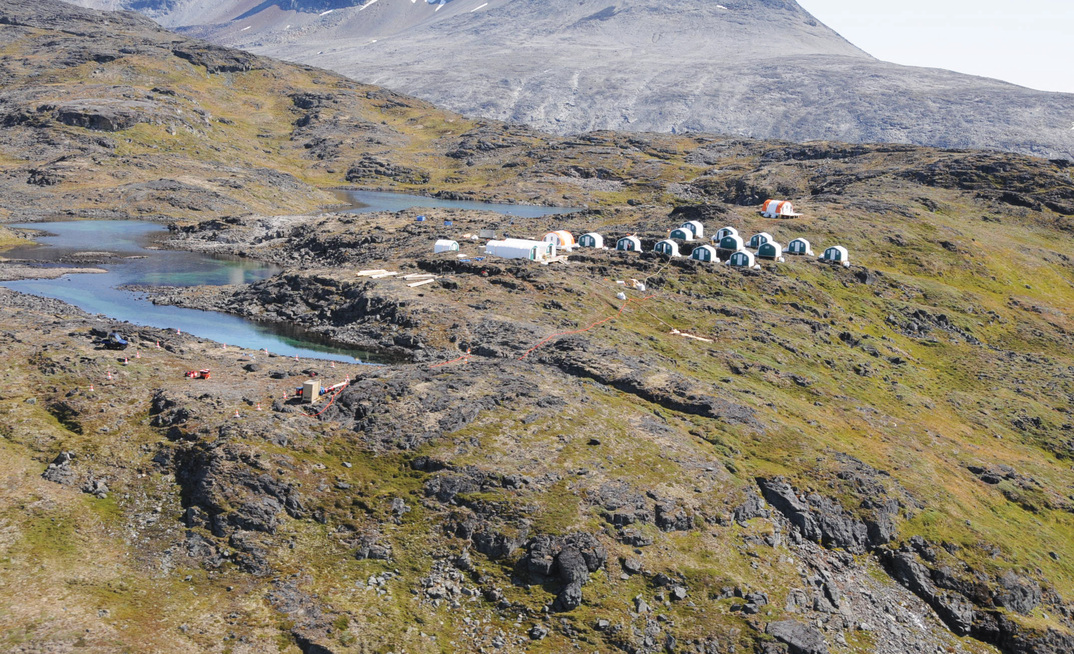Investment Risk Index: CCC
Total Score: 51
Legal: 49
Governance: 50
Social: 77
Fiscal: 50
Infrastructure: 19
Greenland has much more to offer than fishing and colourful houses. Climate change has opened up formerly frozen parts of the massive island and explorers are finding rich deposits of zinc, titanium, copper, iron ore, rare earth elements and uranium.
Mining returned to Greenland earlier this year with the opening of the Aappaluttoq ruby mine in the country's north, although a government target for several major operations by 2018 was hit by the downturn. Now explorers are working hard to catch up as prices improve.
On the ground, there's limited infrastructure but the government has brought this into its pitch to the resources industry; deepwater fjords along the coast will mean ore can be shipped directly from mines to nearby North America or further afield.
One explorer currently raising money for a major project picked Greenland because it had the following attributes: "A strong legal framework, prospective [and] a clear and transparent mining code."
Challenges include the cold over winter and 24-hour darkness at projects north of the Artic Circle, and workers would probably need to be brought in to supplement those drawn from Greenland's population of 56,000.
The Mining Journal World Risk Report (feat.MineHutte ratings) has taken into account the country's legal system, business environment, government and infrastructure.
It found a competitive, though relatively untested, mining code, strong decision-making processes with some infrastructure challenges. The country is clearly pushing for miners and the current mining strategy is designed to get five to 10 large-scale mines up and running in the coming decade.

The edge of the ice cap near Kangerlussuaq in Greenland
Starting up
There isn't a wealth of experience in the mining community with Greenland's mining code; as of August there were 55 valid exploration licences and six exploitation licences.
The MineHutte ratings within the risk report considered the whole system but there are differences between stages of the licensing system; exploration licences provide relatively easy entry before a more rigorous process for exploitation licences.
Christian Hjerrild Ovesen from the Mineral Licence and Safety Authority said there's a real focus on getting explorers into the country and so the whole process, from application to final approval usually takes three to four months. Explorers need to show they either have the funding or a way to get it, some experience on the team and obviously the exact spot and area they would want access to.
Moving a project from the exploration phase to the exploitation phase is a much more involved process; the government advises the social and environmental impact statements alone can take several years to get through.
The numbers of exploration licences from the past 17 years largely follow market cycles but the number of actual mining licences has grown steadily in that time. Exploration licences reached a peak of 79 in 2012, and exploitation licences have grown from one in 2013 to the current six.
Green(land) tape
Accessibility is key in Greenland. Those who are part of the process say the mining licensing and regulation system is based on keeping applicants and explorers aware of where they stand, and operates on a ‘one door' basis.
Bluejay Mining managing director Rod McIllree, who has worked on Greenland projects for over a decade, told Mining Journal this year the Ministry of Mineral Resources was happy to work with miners. "The regulators are prepared to engage with you, to seek a solution to any issue that the industry faces," he said. "This is something you don't get anywhere else."
Overall, companies' experience in recent years has included the standard frustrations miners have with governments; processing time and licensing requirements. Government officials have recognised these concerns.
Ovesen, from the licensing division, said a study had shown Greenland was on par with other mining countries but acknowledged improvements could be made.
"We are pretty quick with the exploration licences," he said. "It's not that expensive and we are quite effective, and then when you go to the next phase, obtaining the exploitation licence, it takes much longer."
"[So what do we] do about this? Because we could definitely be faster. We are adding focus on it ... and we do want to see these exploration licences going into exploitation licences as fast as possible, but another issue is we need information that the companies cannot always provide as fast as we want them to, so that may be part of the delays, too."
Officials have previously said processing time would be looked at in the next multi-year strategy, and will continue publishing in-depth geological data for those interested in coming.
Political backing
The public conversation over mining in Greenland has been significant in the past decade, with the election of the Siumut party in 2013 prompting the Associated Press headline of ‘Mining proponents win Greenland election'.
The country won the rights over its mineral holdings in 2009 after a public vote on self-rule and the Siumut-led parliament overturned a uranium mining ban in 2013. This gave a green light to Greenland Minerals and Energy's Kvanefjeld uranium, rare earth element and zinc project.
There is a level of bipartisan cooperation in the 31-seat parliament not seen in many other mining countries. The current governing coalition includes the Inuit Ataqatigiit Party, which campaigned against allowing uranium projects but now provides the mining minister, Muté Bourup Egede.
Debate will continue in Greenland over the social and economic impacts of mining, like anywhere, but Ministry of Mineral Resources economist Thomas Lauridsen made the point the ministry's strategy will determine how the government manages new projects rather than the political mood of the day.
"These strategies point out the direction for the policy, the regulations and strategies for oil and minerals for quite a long time, and that gives the companies certainty and stability over what is going to happen," he said. "We are working on a new one now, and it's our impression we will follow the same policy outline as the current strategy."
The risk report also looks at a country's population density. That is one of Greenland's strengths; figures from July 2017 give its density as the lowest in the world, at 0.026 people per square kilometre. That means very little likelihood a town would be sitting on a deposit. Australia is full of people, comparatively, with 3.09 people per square kilometre.
There are still concerns in communities over what mining projects will do to the environment but public engagement is de rigeur for explorers. Ministry of Mineral Resources geologist Anna Varga-Vass said the government also took on some of the educational work around projects. "It's the absolute priority for the government to work closely with the public and make sure that the public knows what sort of projects are going in the area," she said.
"At the geology department, we are working on doing workshops and public engagement so people understand exploration and mining and geology in general and why it's important, and why Greenland is so unique."
Fiscal policies
The state's take from mining projects is laid out in the contract with Ironbark from last year. Once the project is up and running, Greenland will take a 2.5% royalty on sales. Citronen's net present value factors in a tax burden of 42% overall, taking it to a post tax $354 million as per the 2013 feasibility study..
The 2014-2018 mineral strategy outlined the overall tax take compared to Canada, Australia and others. The authors of the strategy found the mooted rates quite reasonable: "Based on the individual country comparisons, the main conclusion is that with an overall government take of 37-38% Greenland is at the lower end of the scale".
While this strategy ends next year, the attitude of those in government points to a continuation of the theme. Lauridsen says the government respected miners' need for tax consistency. "It's very important there is stability, you should know what the fiscal framework is for the next 30 years," he said. "There's a strong feeling we can't just change the fiscal regime overnight."
The Ministry also has leeway in charges on explorers; during the downturn some fees were waived so work could go on in a challenging fundraising market.

Part of Nuuk, the capital of Greenland
Seaway
There's not a lot of choice about getting from one place to another in Greenland. Getting up to Bluejay's Pituffik project from the capital, Nuuk, means helicopters or planes for people and boats for equipment. The country's road network is very limited, and basically non-existent outside towns. But there is upside in this; the deepwater fjords along the coast offer direct shipping to miners with minimal infrastructure when they're not frozen. Bluejay has already been able to ship 250 tonnes in bulk samples and Varga-Vass said the easy access to shipping meant projects were streamlined.
"Yes, we don't have highways and railways, but we do have seaways," she said. "The coast is cut by deepwater fjords, going quite far into the mainland, which means most of the deposits and where exploration is going on are right next to deep fjords."
Bluejay's broker SP Angel reported depths of 800m in the fjord alongside the project after a site visit this summer. "So as soon as they extract anything, they can just put it on a ship right away and ship it out of Greenland," analyst John Meyer said.
Additionally, the container point in the capital is currently being expanded and there are plans to lengthen the runways at the Nuuk and Illulisat airports, which could bring in more airlines.
Miners will have to provide their own energy; Ironbark said in its 2013 feasibility study it would install six generator units at the site and the Kvanefjeld project could be hydro-powered.
Access to projects can be limited by bays freezing over in the winter; Pituffik would only be accessible by water in summer without an ice breaker, Bluejay has said, and Ironbark will park its barges over winter as the ice takes over after the average 45-day shipping window from July to September.

Bluejay's Pituffik titanium project in Greenland's northwest comprises three ilmenite-rich targets along an 80km beach
Promising ground
So what brings the miners to this tough terrain? Hugely promising resources and mineral potential. The variety is also important; from the REEs in the south to the zinc and lead-containing sulphide mounds at the top of the island. Gold is also present through the Ketilidian Orogen in South Greenland.
The Brookings Institute explained in layman's term why Greenland is held in such high regard: "For the parts of the country that have been properly explored, Greenland does indeed have a rich resource base consisting of a variety of minerals … for areas that have not been explored, most estimates about resource potential are based on knowledge of shared geology with other areas, such as northern Canada and Norway," Tim Boersma and Kevin Foley said.
Bluejay has garnered the most attention recently out of the Greenland explorers for its Pituffik titanium project in the country's northwest. It is made up of three ilmenite-rich targets along an 80km stretch of beach with an inferred resource of 23.6 million tonnes at 8.8% ilmenite currently on its way to an exploitation licence. After a recent visit, Meyer from SP Angel was almost ecstatic about its potential: "Pituffik is one of the most economically promising mineral projects we have ever had the privilege to visit."
The targets are the beach itself, the ‘raised beach' higher up and the ‘drowned beach' underwater. The titanium appears in ilmenite and magnetite-rich sands that are deposited along the coastline. These rich sands originate from the Steensby Land Sill complex with basaltic sills, and the Neoproterozoic Thule Dyke Swarm, according to the government's geological data. A feasibility study is expected before the end of 2017.
Bluejay's McIllree gave a project update in August: "With drilling started, bathymetry survey commenced, and licencing application modules such as the economic impact assessment, social impact assessment and stakeholder engagement all progressing as stated earlier this year it was very pleasing to see the onsite team implementing and managing multiple work programmes in an efficient and effective manner.
"Now we are focused on demonstrating the significant size of the asset, securing an off-take partner and defining a viable logistics solution to ship our premium quality ilmenite product, as we remain on track to commence commercial production in 2018." The area is known for hosting the US Air Force's Thule base.
Ironbark Zinc's Citronen zinc and lead project in Greenland's north has the advantage of already having its exploitation permit. The ASX-listed company has a lot of capital to raise but has signed a memorandum of understanding with China Nonferrous Metal's engineering division over construction and funding and is preparing an updated feasibility study that conforms to Chinese standards.
Citronen's target deposits are hosted within a Lower Palaeozoic Franklinian basin that spreads from northern Greenland into the Canadian Arctic islands. The pyrite-dominated mineralised zone can be mined through an underground operation before moving to a lower-grade openpit. The 2013 BFS outlined a 14-year mine life initially but noted the resource of 71Mt grading 5.7% zinc and lead would be "open to further mineralisation in almost every direction".
The mine will cost around $430 million although the engineering work from NFC could drop this down. Funding could come largely from China but Ironbark also has a loan and offtake agreement with Glencore to lean on.
There are also two major Greenlandic REE projects that could offer industry an alternative supplier to China. Greenland Minerals and Energy's Kvanefjeld project in the south got a green light once the uranium ban was lifted. The explorer is working on its exploitation licence application and has already set up a pilot plant. The reserve estimate is 108Mt with1.43% rare earth oxide, 362ppm U3O8, and 0.26% zinc.
Tanbreez is closer to a licence for its namesake project, which has an inferred resource of 4.7 billion tonnes grading 0.2% niobium oxide, 0.5% light rare earths, 0.15% heavy rare earths and 0.02% tantalum oxide. The private company's managing director Greg Barnes told Mining Journal earlier this year it was the largest REE resource globally and could compete with China on cost because of that scale. It also has the advantage of not having any uranium in the REE deposit.
Where to now?
Greenland has the means (its massive variety of resources), the motive (jobs, revenue) and the opportunity to get its mining sector moving. In 2014, the Brookings Institute identified just how important this is: "Greenland now finds itself with a more pressing imperative to develop its economy as its financial position is expected to deteriorate significantly over the coming 10 to 20 years.
"The mining and energy sectors appear to be the best option for economic development but it may not happen soon enough, and ultimately the speed with which the industry develops depends more than anything else on the external investment environment."
Beyond the current projects moving into production, this will mean more exploration with a focus on base metals, REEs, gold and even uranium as the price improves. Now the global investment environment has heated up it's time for miners to share that warmth with Greenland.
ABOUT THIS COMPANY
Ministry of Mineral Resources Greenland
Head Office:
P.O. Box 930
Imaneq 1A 201
Nuuk
Greenland
Phone: +299 346 800
E-mail: mlsa@nanoq.gl



























